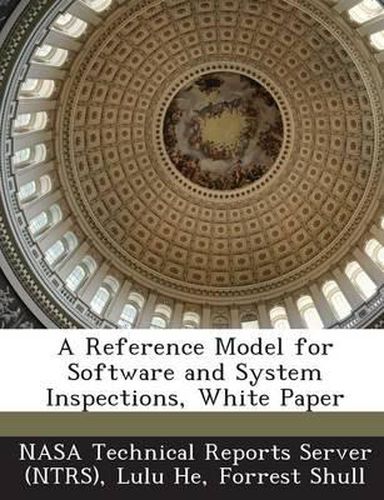Readings Newsletter
Become a Readings Member to make your shopping experience even easier.
Sign in or sign up for free!
You’re not far away from qualifying for FREE standard shipping within Australia
You’ve qualified for FREE standard shipping within Australia
The cart is loading…






Software Quality Assurance (SQA) is an important component of the software development process. SQA processes provide assurance that the software products and processes in the project life cycle conform to their specified requirements by planning, enacting, and performing a set of activities to provide adequate confidence that quality is being built into the software. Typical techniques include: (1) Testing (2) Simulation (3) Model checking (4) Symbolic execution (5) Management reviews (6) Technical reviews (7) Inspections (8) Walk-throughs (9) Audits (10) Analysis (complexity analysis, control flow analysis, algorithmic analysis) (11) Formal method Our work over the last few years has resulted in substantial knowledge about SQA techniques, especially the areas of technical reviews and inspections. But can we apply the same QA techniques to the system development process? If yes, what kind of tailoring do we need before applying them in the system engineering context? If not, what types of QA techniques are actually used at system level? And, is there any room for improvement.) After a brief examination of the system engineering literature (especially focused on NASA and DoD guidance) we found that: (1) System and software development process interact with each other at different phases through development life cycle (2) Reviews are emphasized in both system and software development. (Figl.3). For some reviews (e.g. SRR, PDR, CDR), there are both system versions and software versions. (3) Analysis techniques are emphasized (e.g. Fault Tree Analysis, Preliminary Hazard Analysis) and some details are given about how to apply them. (4) Reviews are expected to use the outputs of the analysis techniques. In other words, these particular analyses are usually conducted in preparation for (before) reviews. The goal of our work is to explore the interaction between the Quality Assurance (QA) techniques at the system level and the software level.
$9.00 standard shipping within Australia
FREE standard shipping within Australia for orders over $100.00
Express & International shipping calculated at checkout
Software Quality Assurance (SQA) is an important component of the software development process. SQA processes provide assurance that the software products and processes in the project life cycle conform to their specified requirements by planning, enacting, and performing a set of activities to provide adequate confidence that quality is being built into the software. Typical techniques include: (1) Testing (2) Simulation (3) Model checking (4) Symbolic execution (5) Management reviews (6) Technical reviews (7) Inspections (8) Walk-throughs (9) Audits (10) Analysis (complexity analysis, control flow analysis, algorithmic analysis) (11) Formal method Our work over the last few years has resulted in substantial knowledge about SQA techniques, especially the areas of technical reviews and inspections. But can we apply the same QA techniques to the system development process? If yes, what kind of tailoring do we need before applying them in the system engineering context? If not, what types of QA techniques are actually used at system level? And, is there any room for improvement.) After a brief examination of the system engineering literature (especially focused on NASA and DoD guidance) we found that: (1) System and software development process interact with each other at different phases through development life cycle (2) Reviews are emphasized in both system and software development. (Figl.3). For some reviews (e.g. SRR, PDR, CDR), there are both system versions and software versions. (3) Analysis techniques are emphasized (e.g. Fault Tree Analysis, Preliminary Hazard Analysis) and some details are given about how to apply them. (4) Reviews are expected to use the outputs of the analysis techniques. In other words, these particular analyses are usually conducted in preparation for (before) reviews. The goal of our work is to explore the interaction between the Quality Assurance (QA) techniques at the system level and the software level.